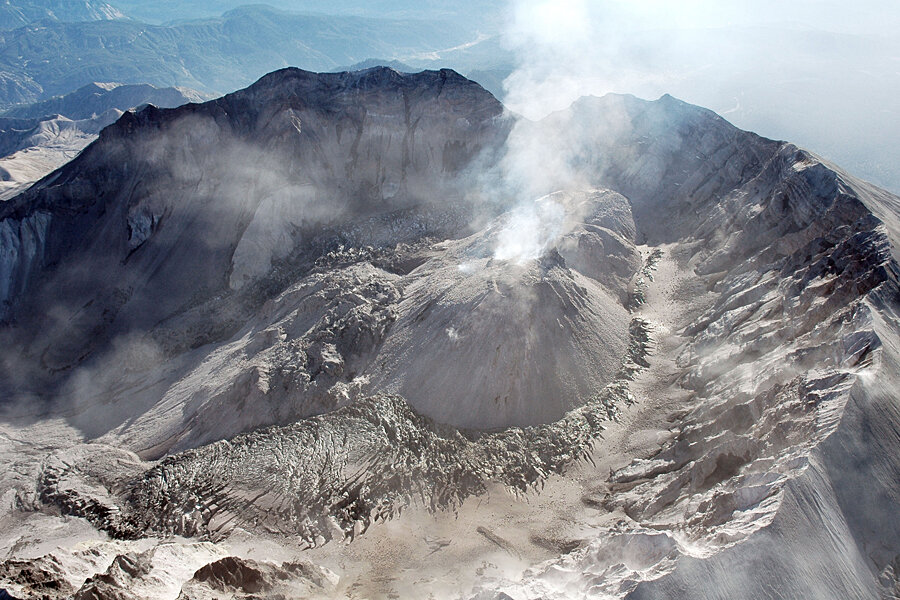Mt. St Helens: Is it ready to erupt again?
Loading...
| LONGVIEW, Wash.
Ten years ago last week, Mt. St. Helens awoke from an 18-year geological slumber.
The news media and volcano-watchers flocked to Johnston Ridge, the closest road with a crater view. Steam and ash eruptions shot thousands of feet into the air, and for several weeks, the area near the volcano was closed because of safety concerns.
Over the next three years, a second lava dome slowly appeared in the crater, eventually rising 1,076 feet above the crater floor. By the time the eruption ended in 2008, climbers had already been allowed back to the summit and media attention faded.
Though the mountain isn't getting as much publicity these days, scientists with the US Geological Survey are marking the anniversary to highlight new eruption warning technology they've installed around the volcano since then and to remind people that Mt. St. Helens will continue to rebuild itself.
The eruption that started a decade ago was the second of two dome-building phases.
The first one started after the explosive eruption of May 18, 1980. Twenty lava eruptions occurred over the next six years.
Geologists were surprised that the mountain stopped erupting in 1986. "Many of us were expecting it to continue a while," said USGS seismologist Seth Moran.
The second lava dome, which started appearing in 2004, appeared at a different spot in the crater. Lava that appeared from 2004-08 was much more solid than during the earlier phase.
Even though the lava dome hasn't erupted since 2008, its shape still is changing.
"As it cools, it fractures and settles and falls apart," said Dan Dzurisin, a USGS geologist. Rockfall has also been changing the shape of the crater rim.
And five miles below the volcano, there are signs that the magma chamber that fueled both eruptions is recharging. Dzurisin said the USGS is focusing on the rate of recharging and whether the magma can compress in the chamber, rather than flowing toward an outlet to the earth's surface.
Though the USGS was able to predict the 2004 eruption by monitoring earthquakes, "it exposed some weaknesses in our monitoring," Moran said.
In September 2004, the USGS had only one GPS device near the volcano, at Johnston Ridge. That device did indeed start to move during the eruption. After the new dome appeared, the USGS landed a helicopter in the crater and had a worker put a GPS there.
"Three days later there was an explosion that wiped out that site," Moran said. "That really forced us to get creative about how to get instruments in close."
The scientists then devised a way of dropping a seismometer from a helicopter.
Since then, the agency has installed numerous GPS receivers around the Northwest. The instruments continually measure a change of location of as little as one millimeter. Data from the receivers combined with video from remote cameras has allowed the USGS to reduce the exposure of its researchers to hazardous situations, Dzurisin said.
Over the centuries, Mount St. Helens has gone through phases of explosive eruptions and periods of rebuilding itself with magma eruptions.
Geologists expect future dome-building eruptions at the volcano. "It looks like Mt. St. Helens is getting ready to erupt again, and it can happen in the order of years to decades," Moran said.
Those eruptions will likely be similar to the one that started a decade ago and no massive eruption like the one in 1980 is expected. "Part of that is that there isn't as nearby big a cork," Moran said.
Eventually, the crater will fill in and the peak may return to the lovely rounded shape it had before 1980.
A model may be the Bezymianny volcano in Kamchatka, which erupted in 1956 and has largely filled in since then. "It probably is the future for Mt. St. Helens," Moran said. "It will rebuild itself. It may just take a lot longer to get there."







